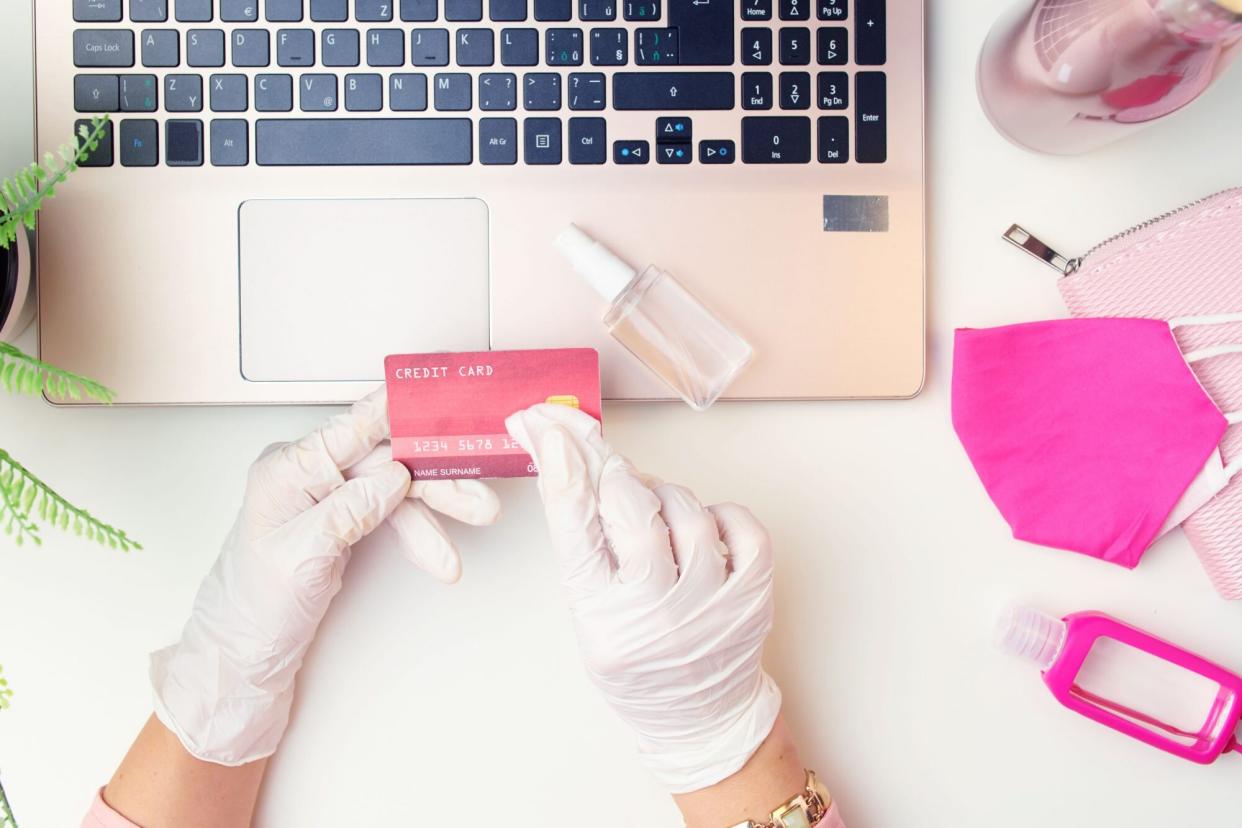Your Guide to Cleaning and Sanitizing Your Credit Cards, Money, and Wallet

CentralITAlliance / getty images
You already know how important it is to sanitize those high-touch areas you come into contact with daily—think light switches, door knobs, and appliance handles—but something else you regularly handle harbors just as many germs, if not more. Though often left out of your cleaning routing, your wallet and its contents are exceptionally dirty. In a 2017 study, researchers analyzed one dollar bills from a bank in New York City and found thousands of microorganisms, including acne-causing skin bacteria, microbes from mouths, and DNA from pets and viruses. What's more, credit cards may be even dirtier.
"These items harbor a lot of bacteria, whether from our own day-to-day use, surfaces around us, or exchanging hands with other people," says Angela Bell of Grove Collaborative's Grove Guide. While these items probably don't pose an immediate risk to you, it's a good idea to use common sense hygiene practices when handling them. Keeping your hands clean before and after handling items in your wallet is key, says Bell. "Hand washing or hand sanitizing is the best way to keep yourself safe when handling money, credit cards, or any other items that could have been exposed to bacteria, germs, and viruses."
Of course, you can also give these items a regular clean. Here's how.
How to Clean Paper Money
While it's not very practical to clean each and every dollar bill you come into contact with, it is possible. "Paper bills can be washed in the gentle cycle of your washing machine using cold water," says Bell. Just don't forget to use a delicates bag ($14.95, grove.co) to help keep everything in place.
How to Clean Coins
Coins are easy to clean with some common household ingredients, namely white vinegar or lemon juice, water, and salt, says Bell. Mix 1/4 cup of vinegar or lemon juice, one cup of water, and one teaspoon of salt, then toss coins in and let soak for at least an hour. Rinse clean, then let dry.
How to Clean Credit Cards
If you're concerned about germs and bacteria lurking on paper money, use credit or debit cards as much as possible for all purchases, since they are easy to clean and durable enough to clean daily, or even after every use. "Isopropyl alcohol is an effective and inexpensive way to clean credit cards," says Bell. "Just add undiluted alcohol to a spray bottle, spray your cards, and wipe dry with a microfiber cloth ($9.95 for three, grove.co)." For convenience, you can even keep a small, travel spray bottle in your purse or car for cleaning on-the-go. "Using hand sanitizer can be good for a quick fix, but can lead to a build-up of residue on the card due to the ingredients that help moisturize hands."
How to Clean Your Wallet
Of course, you'll also want to sanitize the container that holds these items, otherwise you risk cross-contamination. Aim to clean your wallet about once a week, says Bell. The best way to clean your wallet depend on the material. For leather, dilute a clear, gentle dish soap ($4.95, grove.co) with with warm water, says Bell. Then, use a soft cloth to wipe down all the wallet folds. Wipe off the soap with a second clean, damp cloth and towel dry. For canvas wallets, hand washing works well, says Bell. Fill a sink or small bucket with lukewarm water and a gentle detergent, use a brush to scrub any build-up or stains, and let air dry.

